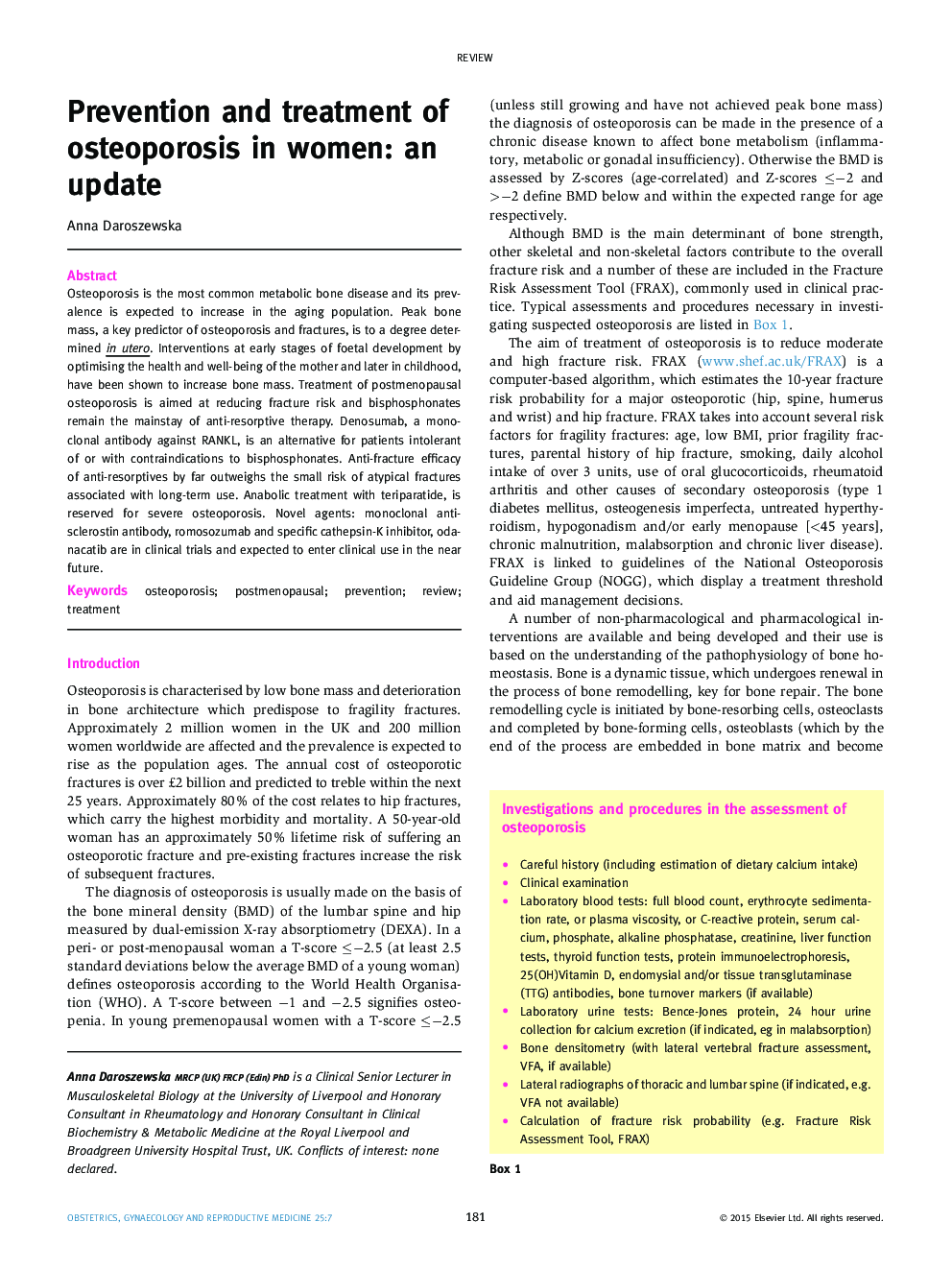| Article ID | Journal | Published Year | Pages | File Type |
|---|---|---|---|---|
| 3966547 | Obstetrics, Gynaecology & Reproductive Medicine | 2015 | 7 Pages |
Osteoporosis is the most common metabolic bone disease and its prevalence is expected to increase in the aging population. Peak bone mass, a key predictor of osteoporosis and fractures, is to a degree determined in utero. Interventions at early stages of foetal development by optimising the health and well-being of the mother and later in childhood, have been shown to increase bone mass. Treatment of postmenopausal osteoporosis is aimed at reducing fracture risk and bisphosphonates remain the mainstay of anti-resorptive therapy. Denosumab, a monoclonal antibody against RANKL, is an alternative for patients intolerant of or with contraindications to bisphosphonates. Anti-fracture efficacy of anti-resorptives by far outweighs the small risk of atypical fractures associated with long-term use. Anabolic treatment with teriparatide, is reserved for severe osteoporosis. Novel agents: monoclonal anti-sclerostin antibody, romosozumab and specific cathepsin-K inhibitor, odanacatib are in clinical trials and expected to enter clinical use in the near future.
